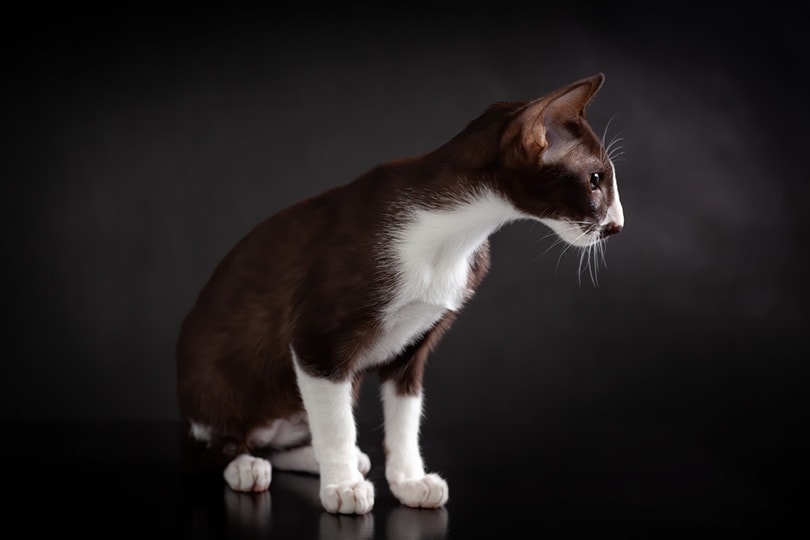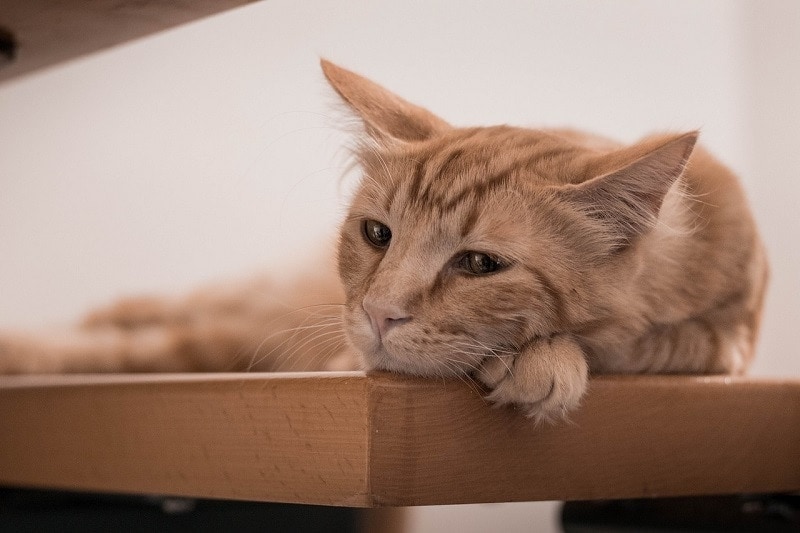Do Cats Have Control Over Their Tails? Feline Anatomy Facts & FAQs

Updated on
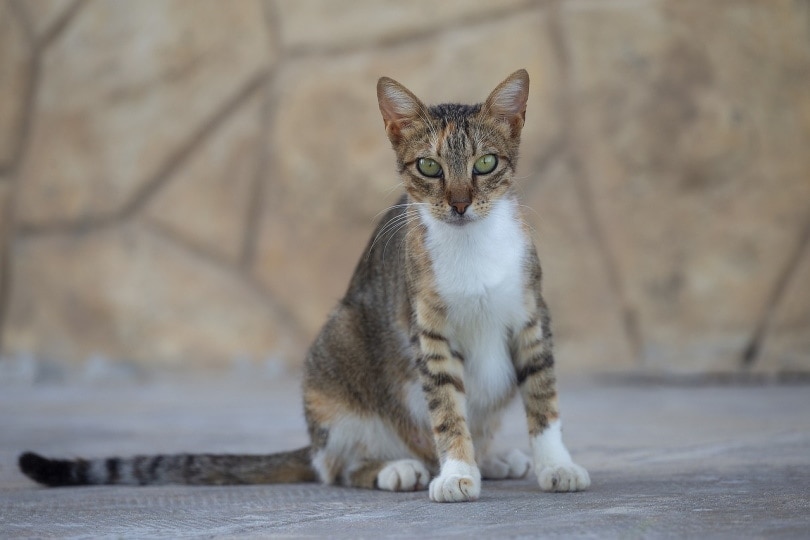
Have you ever wondered how much control your cat really has over their tail? Do they even realize it’s there, and if so, can they control each movement?
While it might seem foreign to us, cats have complete control over their tail in much the same way that we can control our fingers and arms. Since they have complete control of their tails, they use them for various functions, including communication and balance.
But how does your cat use their tail to communicate, what does it mean, and how do they use their tail to help balance themselves? We answer all those questions and more for you here.
What Does a Cat’s Tail Movements Mean?
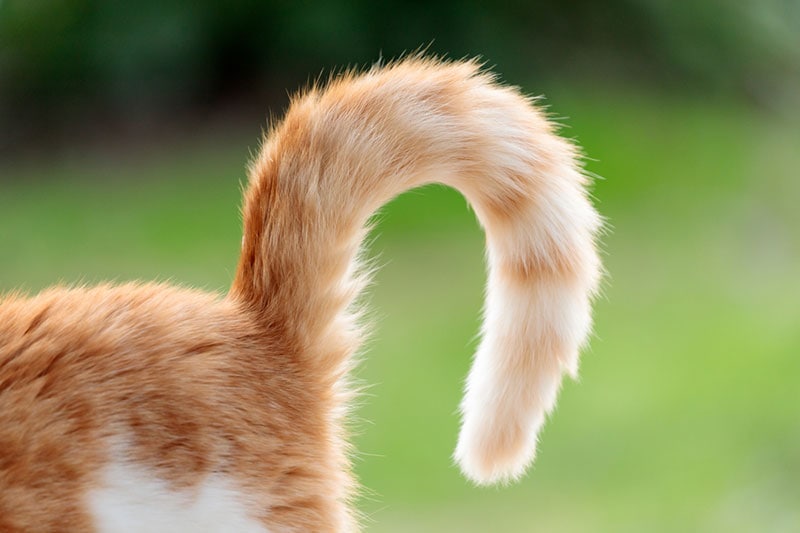
Since cats have complete control over their tails, they use them in a wide variety of ways. Chief among the reasons for tail movements is communication. If you know what you’re looking for, you can gather valuable insight into how they’re feeling.
Here, we’ve highlighted four of the most common ways that cats will use their tail to communicate and what exactly each movement means.
Straight Tail
If you notice that a cat has a completely straight tail, one that is pointing straight up, chances are that they’re meeting someone new. It isn’t an unfriendly greeting, but it does show that they’re in unfamiliar territory.
It’s not a behavior that you’ll likely see from your cat too often, but if you introduce them to new cats, people, or other pets, you might see it.
Slightly Curled Tail
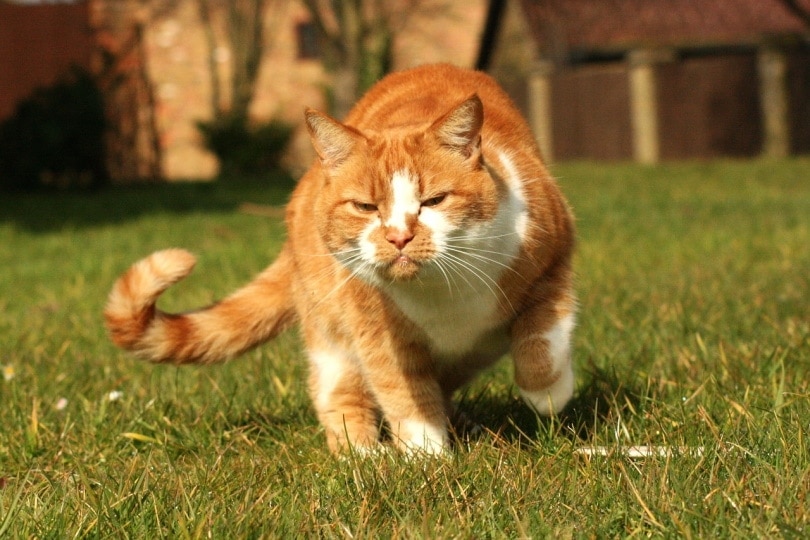
If you’re a good cat owner and your cats feel comfortable at home, the most common position for their tail is for it to be slightly curled. This signifies that they’re relaxed, and it is the most common way for your cat to keep their tail positioned.
Look for a slight curve at the tip when they’re walking around or lying down. If they have this, then they’re in a relaxed and happy state!
Tail Swishing Back and Forth
The most common time that you’ll see this is when your cat is crouched and getting ready to pounce. This doesn’t necessarily mean they’re in an aggressive mood. In fact, it usually signifies that they’re feeling playful.
However, there is a significant exception to this, and that’s if they’re completely lying down. If your cat isn’t crouched but is lying down and thumping their tail against the ground, there’s a good chance that they’re feeling frustrated.
If this is the case, you’ll need to find the source of their frustration to placate them and probably give them a wide berth in the meantime.
Fluffed-Up Tail
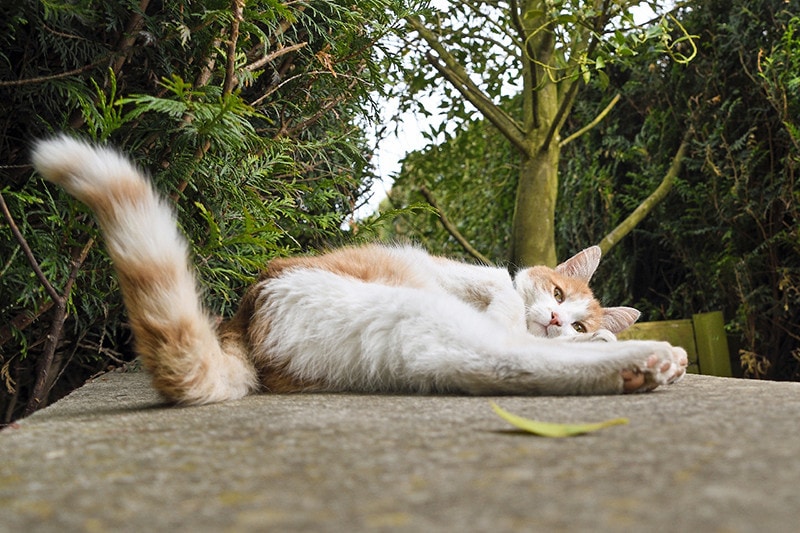
The most notable way your cat has to show you that they are on edge is by fluffing up their tail. They typically fluff up both their tail and the hair along their back, and if they’re doing this, then they’re feeling extremely defensive.
If you get too close, they might lash out with claws or teeth. If they have a fluffed-up tail, give them a bit of space; they might need more time to adjust to their new surroundings.
Why Does My Cat Keep Hitting Me With Their Tail?
Have you ever sat down to watch a show or at the dinner table, only to have your cat come up to you and hit you with their tail over and over? If so, you’re not alone. The good news is that if your cat is doing this to you, they’re not trying to hurt you!
In fact, they’re likely trying to let you know that they want to play. They could also be trying to get your attention so you can give them treats!
If your cat is hitting you with their tail, they’re doing it for attention; it’s up to you to decide how you want to respond and to find out what they want.
How Do Cats Use Their Tail to Balance?
If you took a cat’s tail away, you’d find that they couldn’t handle situations nearly as well as they used to. A cat uses their tail as a counterweight. It’s an instinctual thing; a cat naturally uses their tail in the same way that a tightrope walker uses a balancing pole to help them stay balanced.
It might not make much sense to you, but it works remarkably well for your cat, and it’s why they can walk across small ledges and climb up difficult terrain with ease.
The next time that you watch your cat climbing across the back of the sofa or along another small surface, keep an eye on their tail. It might surprise you how well they hold it place during each movement to enable them to climb with ease.
Should You Pull Your Cat’s Tail?
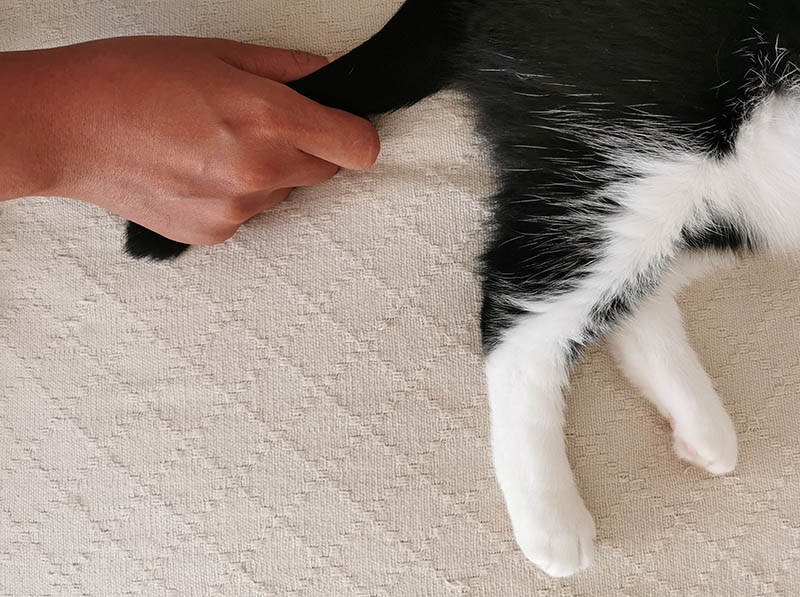
The short answer to this is a resounding no! A cat’s tail connects to their entire spinal column, and pulling it, even gently, can lead to damage that includes paralysis.
While you’ll hear the opinions of dangerously misinformed people telling you that it’s like a massage for a cat, the associated risks make it a bad idea.
To be clear, some cats will enjoy gentle tail pulls, but just because they enjoy it, that doesn’t mean it’s good for them. It’s best to leave their tail alone, even if they do trust you with the occasional tail pull.
Final Thoughts
Your cat has complete control over their tail in the same way that you can control your leg. They might not think of its location every second of every day, but do you think about how exactly you walk up the stairs?
When a cat needs to, they control their tail with ease and almost always through instinct. It’s the same situation with many of your body parts, even if you don’t often think of it that way.
By knowing what your cat uses their tail for, you might find that you have a better understanding of what your cat is feeling and can bond with them more completely!
See also:
Featured Image Credit: LuidmilaKot, Pixabay


